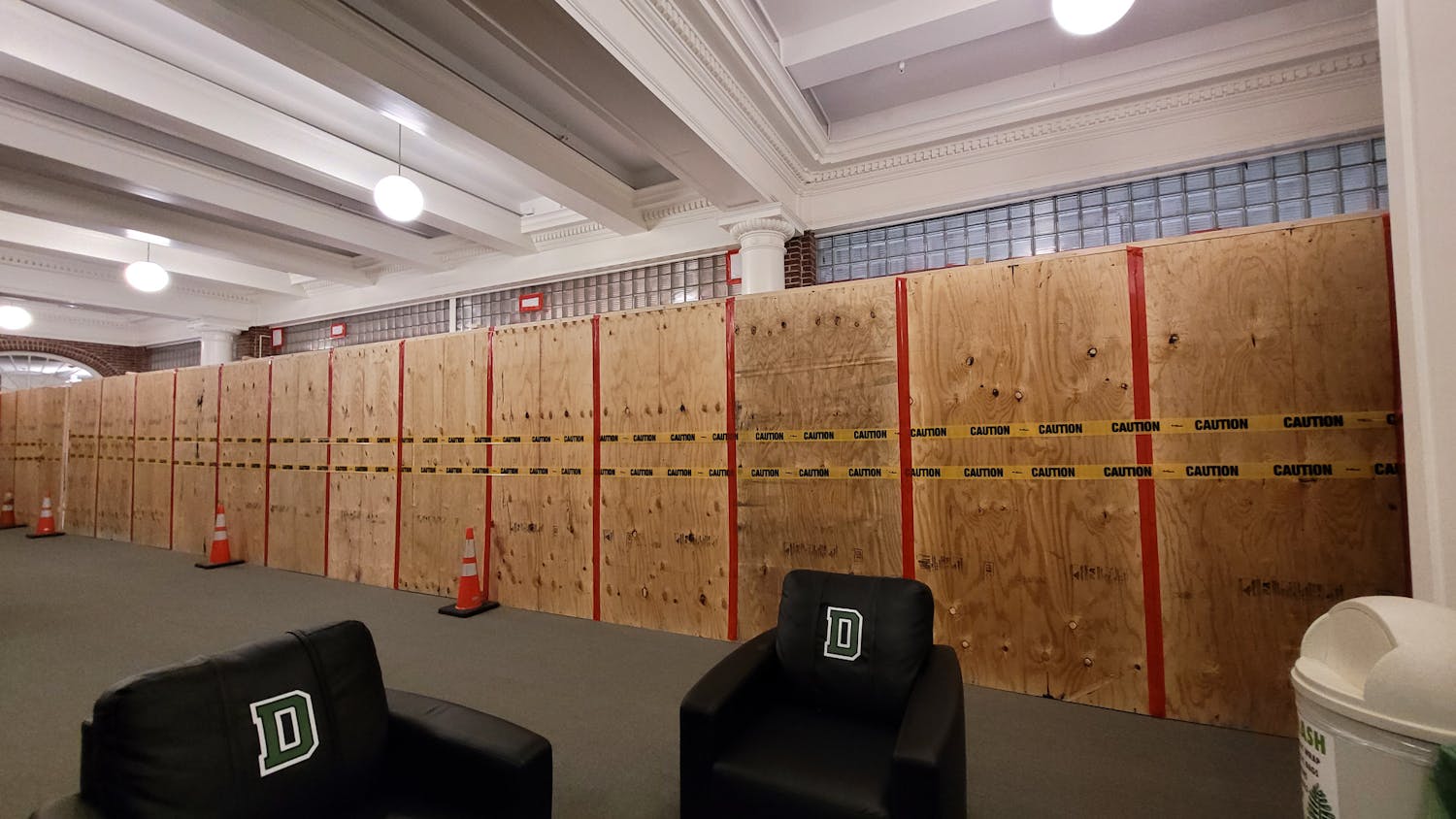Rather than snapping selfies, students pulled out their iPhones to capture an image of Mercury’s transit of the sun, reflected by projection telescopes on the Green yesterday morning. Mercury’s transit occurs once every five to 10 years, and its next one is set to take place in 2019.
Students, faculty and Hanover residents observed a small speck on the sun’s surface as Mercury — the smallest and fastest planet in the solar system — journeyed across the sun and cast its shadow.
About 200 people stopped by the telescopes to view part of Mercury’s seven-hour transit, physics and astronomy graduate student Katie Weil said, who is responsible for the department’s public observing events.
Observing Mercury’s transit requires the Earth, Mercury and the sun to all be aligned in the same plane.
“You’d think that if the planets are all lined up along a plane — which they [almost] are — this would happen all the time,” astronomy professor Ryan Hickox said. “But it turns out that the orbits of the planets are slightly misaligned from each other.”
Mercury’s orbit around the sun, which takes 88 days in total, is inclined 7 degrees compared to Earth’s orbit. This causes the planet to usually move above or below an observer’s line of sight to the sun.
There are only two locations where Mercury crosses Earth’s orbital plane. If Mercury happens to pass one of these intersection points at the same time as Earth does, the transit can be seen, Hickox said.
Venus is the only other planet between the Earth and the sun. Although transits of the sun by Venus do occur, they happen much less frequently than those by Mercury.
Two transits typically occur within eight years of one another, followed by a century without any, he said. The last two Venus transits were in 2004 and 2012. The next two are predicted for the years 2117 and 2125.
Hickox said that watching Venus transit the sun was one of the few times he had an intuitive feeling for the scale of the solar system, the relationship between the size of the sun and the planets and how distant the pieces of the system are from one another.
Studying astronomy gives individuals an appreciation for the universe in which they live, Hickox said.
“Naturally, people tend to concentrate on things that happen here on Earth, but we know from astronomical observations that we live inside this big solar system, which is then part of this larger galaxy, which is part of this huge universe,” he said. “It gives you a nice sense of perspective when you understand the larger context in which the Earth exists.”
Hickox also noted that as Mercury moves past the sun, the sun transmits slightly less light. This small change in brightness also occurs when planets pass over other stars, Hickox said. In fact, the perceived dimming of stars is the mechanism used by the Kepler spacecraft to detect thousands of extrasolar planets, he noted.
Roughly half of those in attendance yesterday were students in Astronomy 1 who were conducting a solar lab, Weil said.
The students were comparing data they collected to data from the Solar Dynamics Observatory, a satellite that takes images of the sun every 15 minutes, physics and astronomy graduate student McKinley Brumback said. Students focused on observing Mercury’s transit and sun spots, which are magnetic trappings of plasma in the Sun, she added.
Jack Smul ’19 said that this is one of two outdoor labs the Astronomy 1 class has completed. The other, conducted at night, largely consisted of stargazing, he added.
“I know for a fact a lot of us here are not science focused, and so it’s actually really great to get out here and see a practical application of science, which is more than just theories on a chalkboard,” said Walker Schneider ’19, another student in the class. “It’s very rewarding because we actually get to see the fruition of our studies and its physical manifestation.”
Abigail Hartley ’16, an English major who has worked at NASA in social media, said that the class is “objectively really cool” and will aid in her understanding of the jargon used within the NASA machine-learning laboratory.
A physics class from Hanover High School also participated in the viewing. The high school students were very excited about being able to look directly at the sun using the solar telescope and special glasses, Weil said.
Weather-permitting, observing events are held every Friday night during term. Attendees have the opportunity to zoom in on the moon, planets, stars, clusters, nebulae and galaxies using the astronomy department’s 12-inch telescopes.
Today, small, amateur level reflecting telescopes are used for the department’s public observing events, Hickox said. However, the Shattuck Observatory, the first science building opened on campus, houses a Clark Refracting Telescope built in 1872.
For research purposes, Dartmouth students and faculty travel to the MDM Observatory on Kitt Peak in Arizona and the Southern African Large Telescope. The College owns a share in both.
Students on the astronomy foreign study program spend a number of days at the SALT telescope, the largest in the Southern hemisphere, and funds provided by Jay Weed ’80 Tu ’82 and Claudia Sweeney Weed ’81 Tu ’82 support undergraduate research at MDM in Arizona each year.
The Mercury transit was fully visible from much of Europe, northwestern Africa, eastern North America and South America. NASA and the European Space Agency provided live streams of the crossing.



